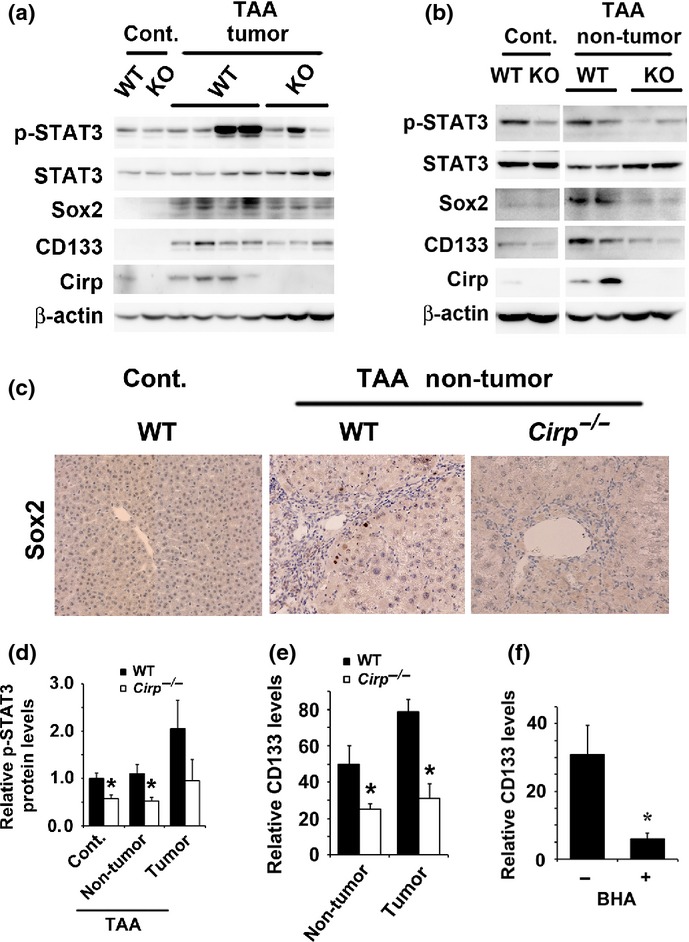Fig 2.

Decreased expression of phosphorylated (p-)STAT3, Sox2, and CD133 in Cirp−/− mice. Wild-type and Cirp−/− mice were treated with thioacetamide (TAA) for 10 months. (a, b) Homogenates of tumors (a) and non-tumor liver tissues (b) were gel-separated and immunoblotted with the indicated antibodies. Representative data are shown. Cont., non-treated liver. (c) Representative immunostaining images of non-tumor tissues with anti-Sox2 antibody. Cont., non-treated liver. (d) The p-STAT3/actin ratio was measured. Quantification of Western blot bands was carried out using densitometry. *P < 0.05 compared with WT mice. (e) RNA was extracted from tumors and non-tumor tissues. Relative mRNA amounts of CD133 were determined by real-time quantitative PCR and normalized to the amount of actin mRNA. The amount of mRNA in untreated liver was given an arbitrary value of 1.0. Results are means ± SEM (n = 6 per group). *P < 0.05 compared with WT mice. (f) WT mice were fed either butylated hydroxyanisole (BHA)-containing (0.7%) or regular chow and treated with TAA for 8 weeks. Relative amounts of mRNA were determined by real-time quantitative PCR and normalized to the amount of actin mRNA. The amount of CD133 mRNA in untreated liver was given an arbitrary value of 1.0. Results are means ± SEM (n = 4). *P < 0.05 compared with mice fed regular chow.
